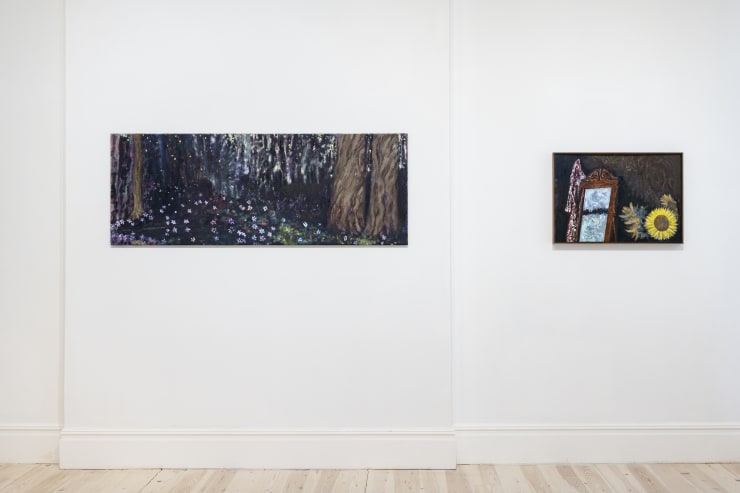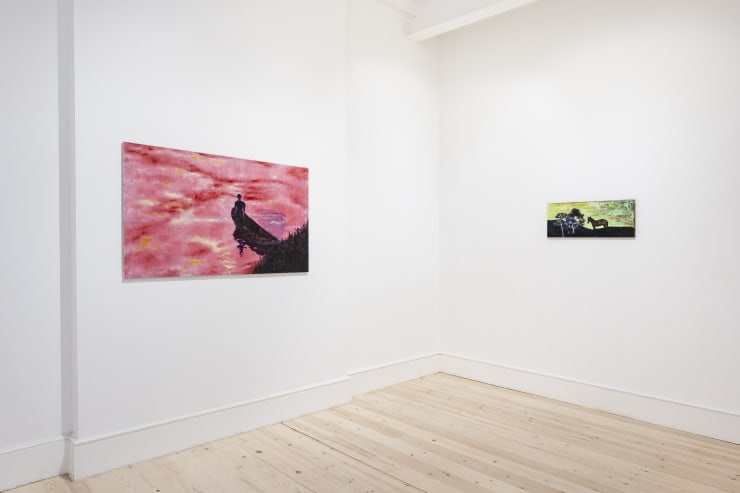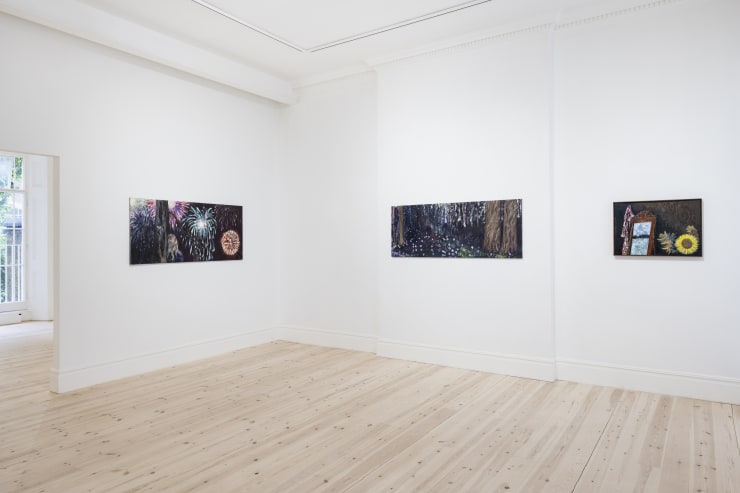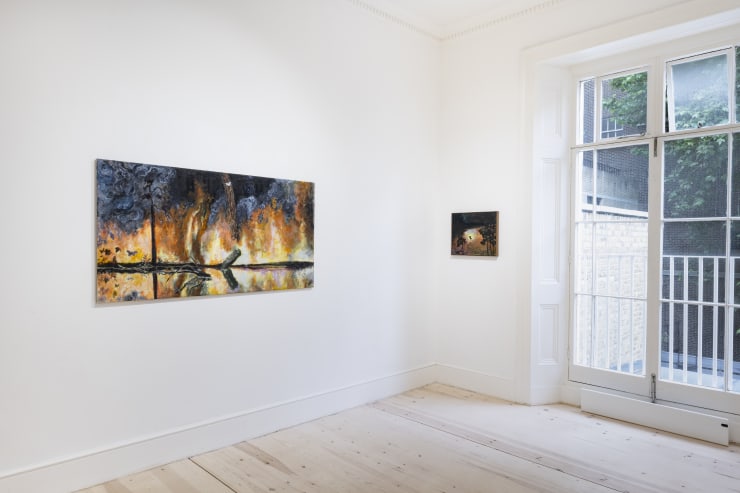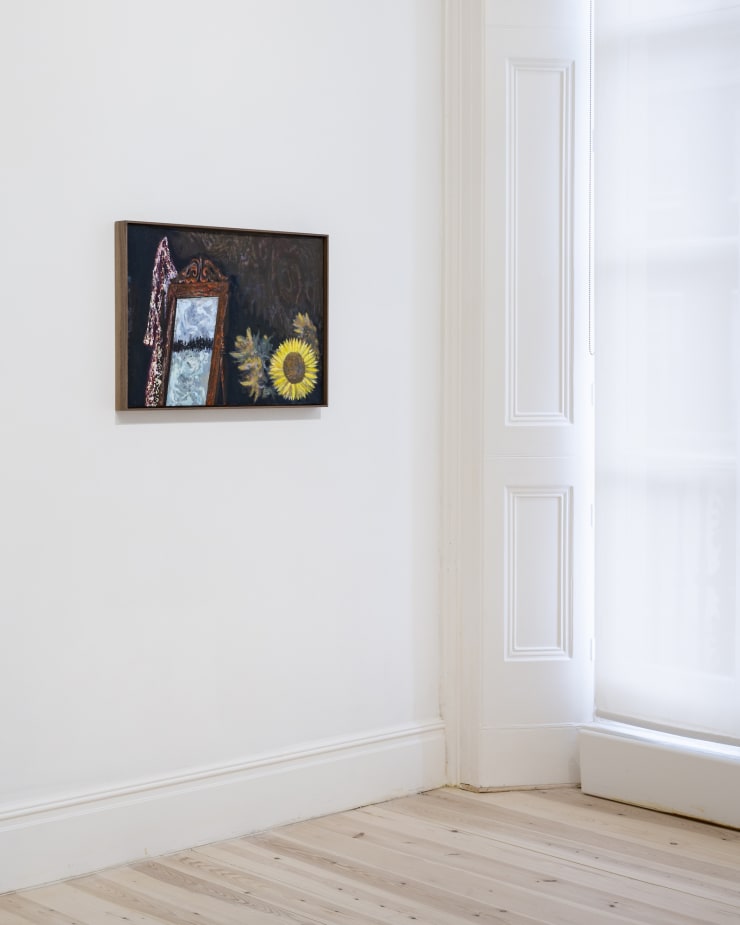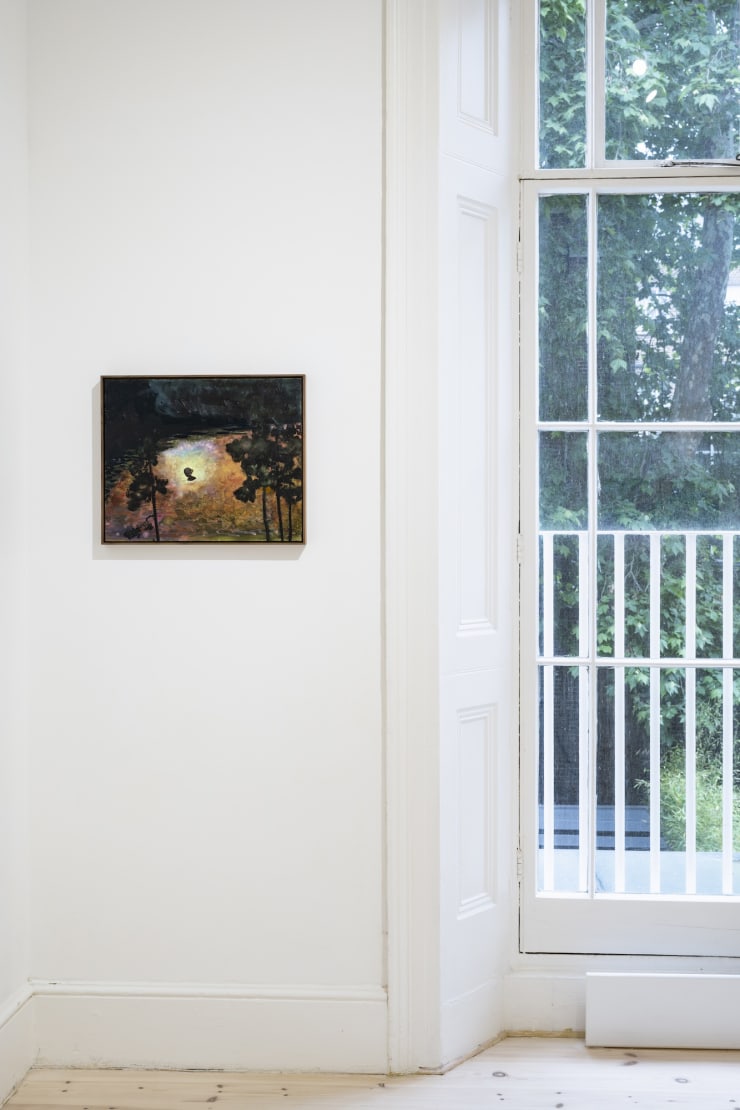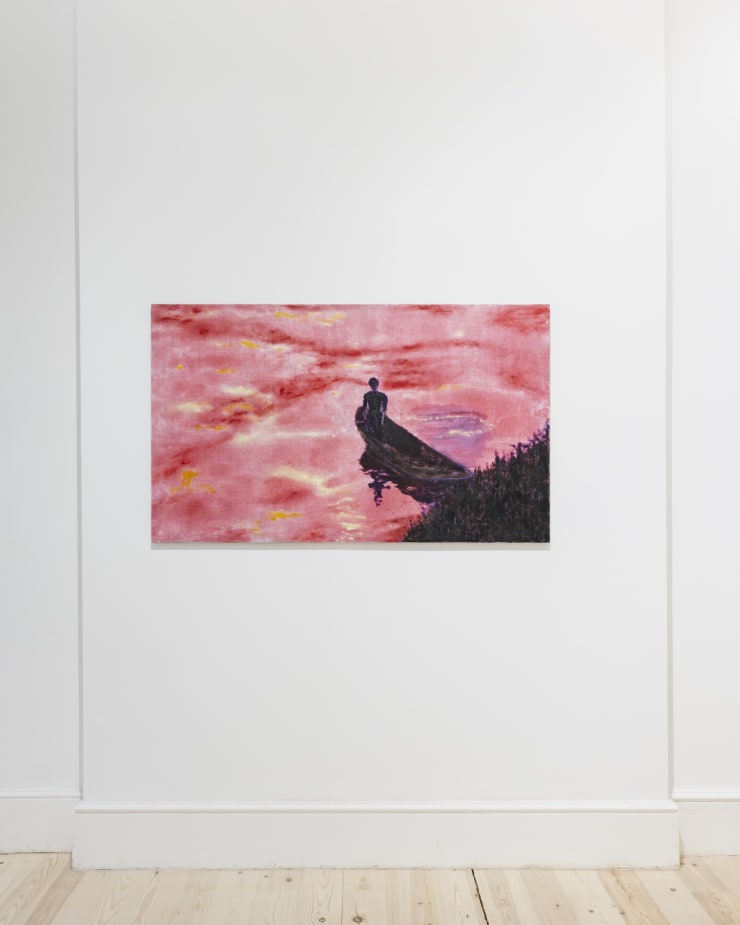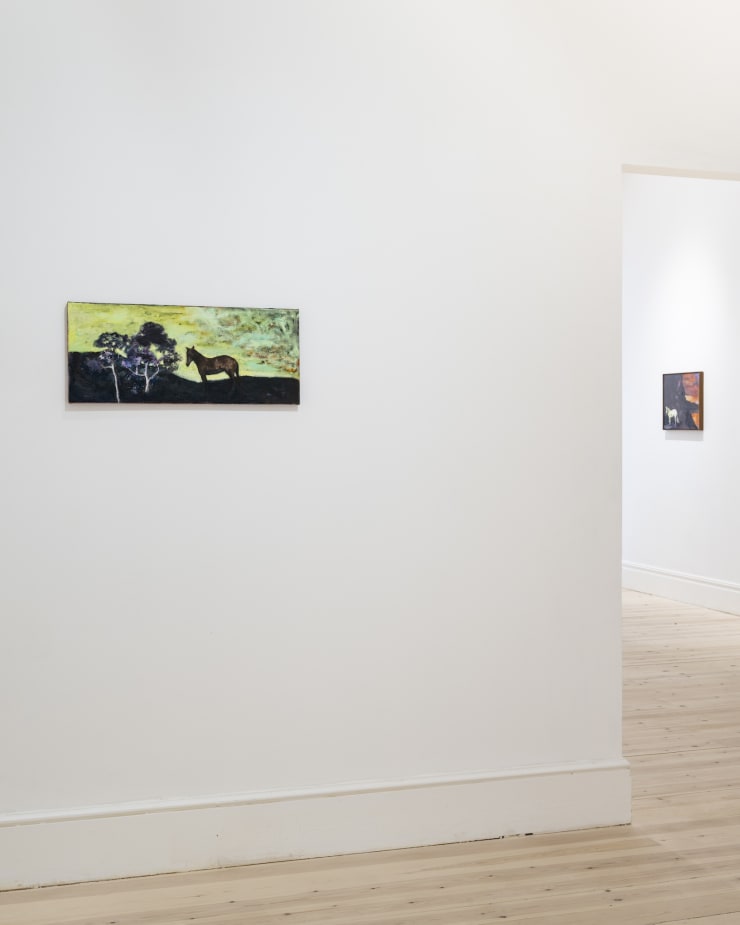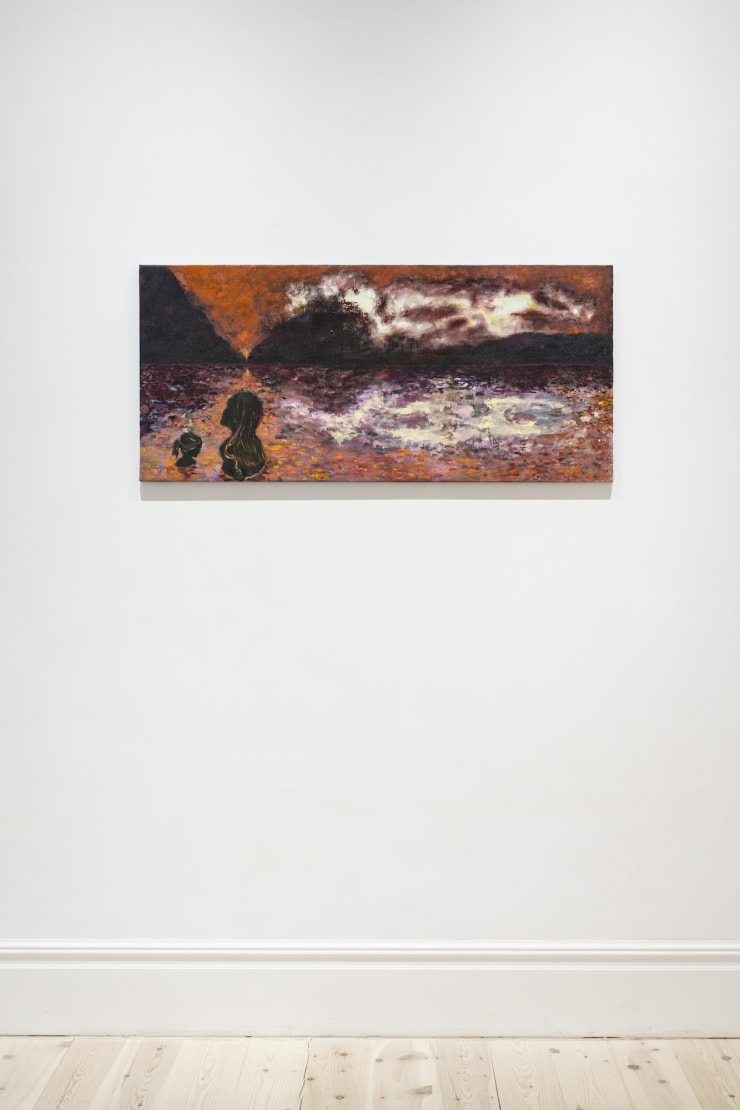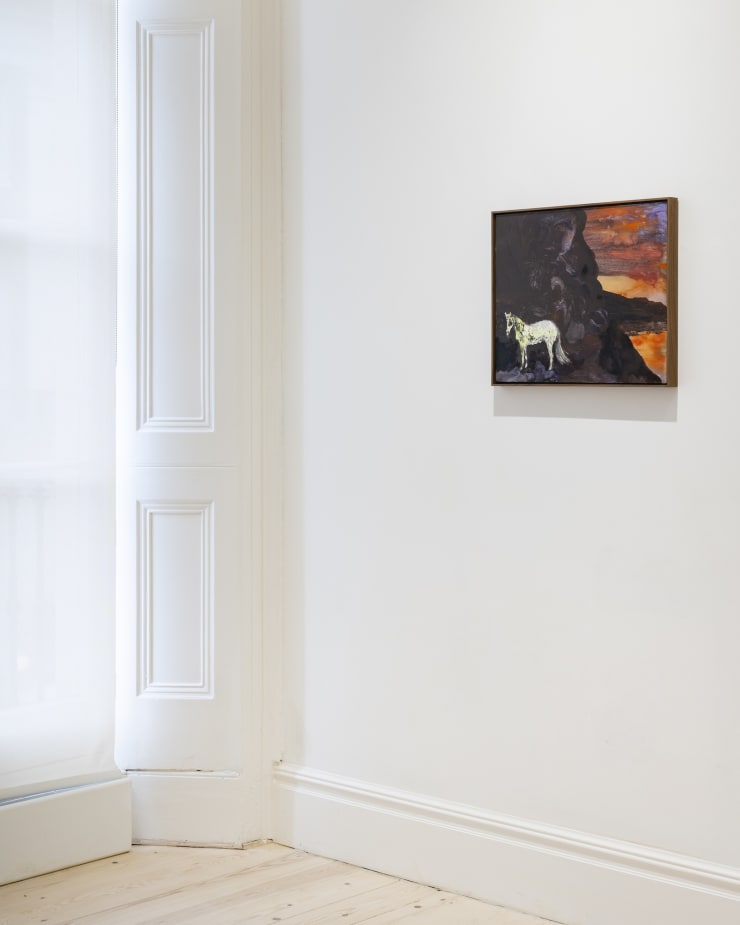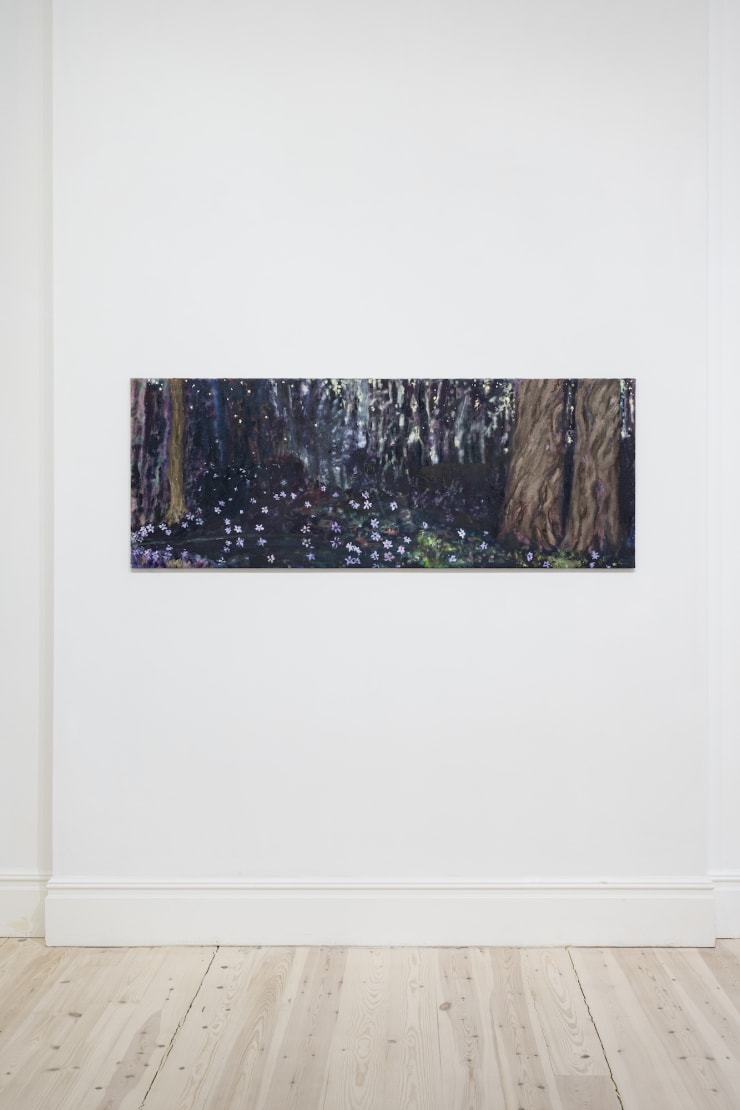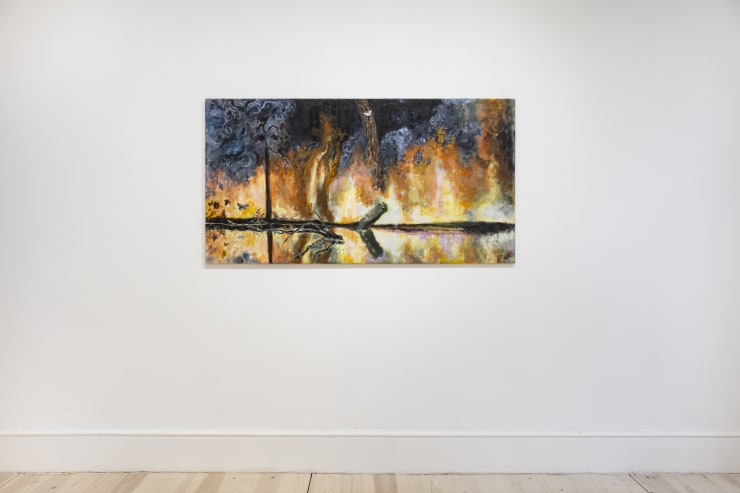Julia Adelgren: Dragonfly Den
Archive exhibition
Images
Installation Views
Press release
Julia Adelgren
Dragonfly Den
8 June-23 July 2022
Dragonfly Den is the second solo exhibition by Julia Adelgren at MAMOTH, featuring a selection of new paintings, on view from 8 June to 16 July 2022.
"We went down into the silent garden. Dawn is the time when nothing breathes, the hour of silence. Everything is transfixed, only the light moves." - Leonora Carrington
Piercing through the silence of the pre-dawn night, the nightingale's song has long heralded the approaching day, like an expectant breath before the sun's first light breaches the horizon. Ornithologists tell us that only those male nightingales that have not yet found a mate continue to sing, imbuing their calls with a poetic and deeply moving inner sorrow. Undeterred, these lone individuals cling to the hope - more desperate as time passes - that with each new night and each new song, their longing for companionship will finally be fulfilled. In her paintings, Julia Adelgren captures this ephemeral melancholy, and the quiet foreboding lurking underneath. The chance of a new beginning is associated with myriad new possibilities, and the potential for new disappointments.
In this new group of works, Adelgren takes us into the crepuscular space between night and day. The painter freely invites us into her enraptured world, lets us share in quiet moments, shocks us with brutal forces of nature and then holds the healing power of the earth before our eyes. Her scenes are illuminated by a diffused light that seems to borrow from Venetian High Renaissance painting and lends the depictions an elegiac weight. It is the same ambiguous light that encourages the nightingale to continue fighting against loneliness, a tender reminder that darkness makes the light shine all the brighter, that the heaviness of night is followed by the lightness of day.
The subtlety of the illumination has a voyeuristic quality, as if Aldegren is offering up the intimate details of her life to the viewer. For thousands of years, humanity has felt this need to share its experiences for posterity, in order to feel less alone in its existence. On stone walls around the world - from Indonesia to Europe to the Americas - cave paintings reveal the desire of our ancestors to make a record of their lives. Since the invention of photography in the mid-19th century, and especially since the advent of social media a century and a half later, it has become much easier to open a window onto our lives. But unlike the still image frozen in time, painting can express a kind of fluidity and emotional immediacy photography can never fulfil. Collectively, Adelgren's paintings take us on that journey, from beginning to end, from the rock paintings of the Paleolithic to snapshots of the present. Inner states of being, as old as humankind, are transcribed by the painter onto the canvas and made tangible. Emotions are not only expressed through the image, but reach out to the viewer in every stroke of the brush. Calm surfaces are juxtaposed with riotous, expressive colour; the conditions on the canvas reflect the artist's state of mind, offering us a brief glimpse into her inner life.
Author John Ruskin advised his students in 1870 to "let every dawn of morning be to you as the beginning of life, and every setting sun be to you as its close." Julia Adelgren's paintings symbolize the penumbra of this relentless cycle, the in-between space from which emerges longing for the new possibilities of each day. And in the end, there is the suggestion, subtle and oblique that the nightingale's hope for company can, at any moment, be fulfilled.
Text by Nicola E. Petek

